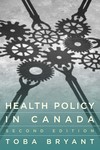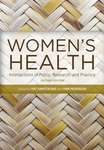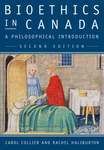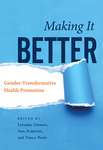We don’t actively support Internet Explorer
It appears that you are using Internet Explorer, which has been discontinued by Microsoft. Support has ended for versions older than 11, and as a result you may face security issues and other problems when using it.
We recommend upgrading to a newer browser such as Firefox, Google Chrome, or Edge for a much better experience across the web.
While this site may work with Explorer, we are not testing and verifying it, so you may run into some trouble or strange looking things.
Complementary, Alternative, and Traditional Medicine
Prospects and Challenges for Women's Reproductive Health
Edited by Jennie M. Hornosty, Maria Costanza Torri
Overview
This timely edited collection explores the use of complementary, alternative, and traditional medicine for women’s reproductive health. Bringing together a multidisciplinary team of contributors from around the world, Torri and Hornosty introduce students to topics such as fertility, menopause, pregnancy, child birth practices, post-natal care, breastfeeding, and breast cancer. Providing insights into the wide spectrum of practices and beliefs that define complementary and alternative medicine, the contributors situate women’s health issues within the local socio-cultural, geographic, economic, historical, and political contexts in which they exist. The thought-provoking research and discussions explore some of the perceived differences and complementarities between traditional medicine and biomedicine in reproductive health. Featuring learning objectives, critical thinking questions, and a glossary, this pedagogically rich volume is well suited to courses in medical anthropology, sociology of health and medicine, women’s health, public health, and health policy.
Table of Contents
Acknowledgements
Introduction
PART I: KEY ISSUES AND HISTORICAL PERSPECTIVE
Chapter 1. Introducing Complementary and Alternative Medicine, Traditional Medicine, and Gender, Daniel Hollenberg and Maria Costanza Torri
Chapter 2. Women as Healers in the Global Community: An Overview from Antiquity to the Present, Daniel Hollenberg
Chapter 3. Herbal Fertility Treatments in Colonial North America and Prospects for Modern Medicine, Cheryl Lans and Rachel Westfall
Chapter 4. Being “There” for Pregnant Women: Canadian Midwives in Indigenous and Settler Communities, Cecilia Benoit, Dena Carroll, and Rachel Westfall
PART II: GLOBAL SOUTH
Chapter 5. Childbirth in Brazil: Voices of Brazilian Women, Natália Rejane Salim and Julie Laplante
Chapter 6. Intercultural Birth Practices and Reproductive Health in Ecuador, Maria Costanza Torri
Chapter 7. Giving Birth in the City of Cochabamba, Bolivia: Traditional Birth Attendants’ Practices Versus Biomedical Maternal Health Care, Maria Costanza Torri and Julie Laplante
Chapter 8. Women, Jamu, and Breast Feeding Practices in Indonesia, John Paul Nyonator
Chapter 9. Traditional Medicine and Reproductive Health, Conception, and Fertility in Turkey, Tamer Edirne
Chapter 10. Birth from the Peripheries: Local Realities in Dzodze, Ghana, John Paul Nyonator
PART III: GLOBAL NORTH
Chapter 11. A Post-colonial Feminist Analysis of Two Popular Complementary Medicine Hot Flash Remedies, Nadine E. Ijaz
Chapter 12. The Use of Complementary and Alternative Medicine by Australian Women for Infertility, Jo-Anne Rayner and Karen Willis
Chapter 13. Traditional Chinese Medicine Practitioners’ Constructions of “Hard” and “Soft” Evidence in the Treatment of Fertility Issues: Opportunities and Challenges, Ana M. Ning
Chapter 14. The Value of Complementary and Alternative Medicine for Breast Cancer Survivorship, Ausanee Wanchai, Jane M. Armer, and Bob R. Stewart
Conclusion
Contributors
Index






